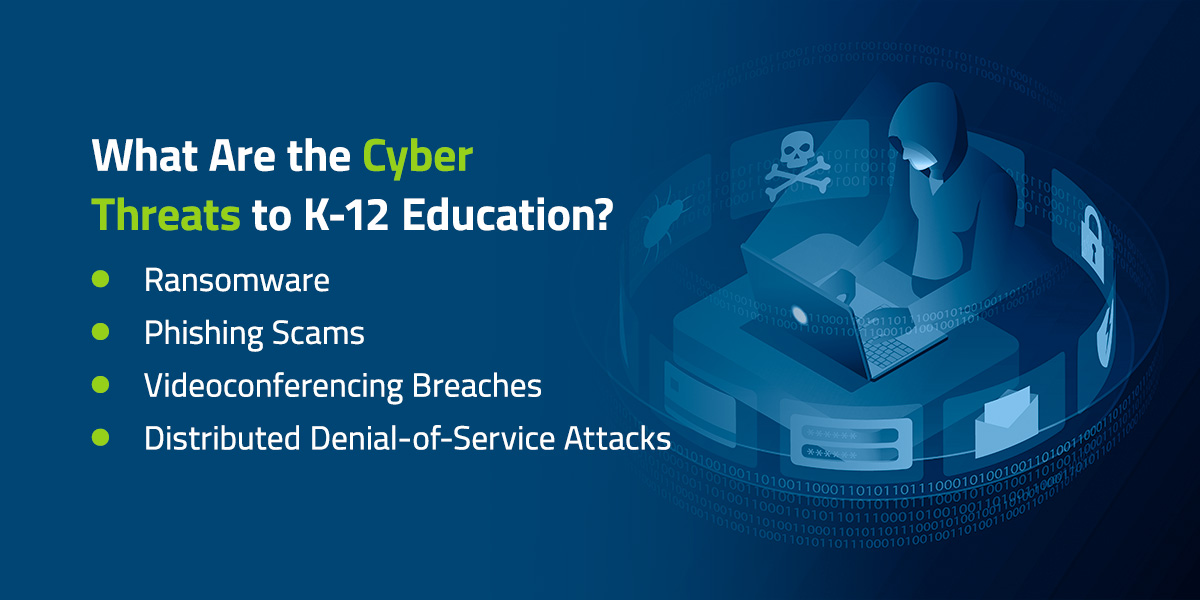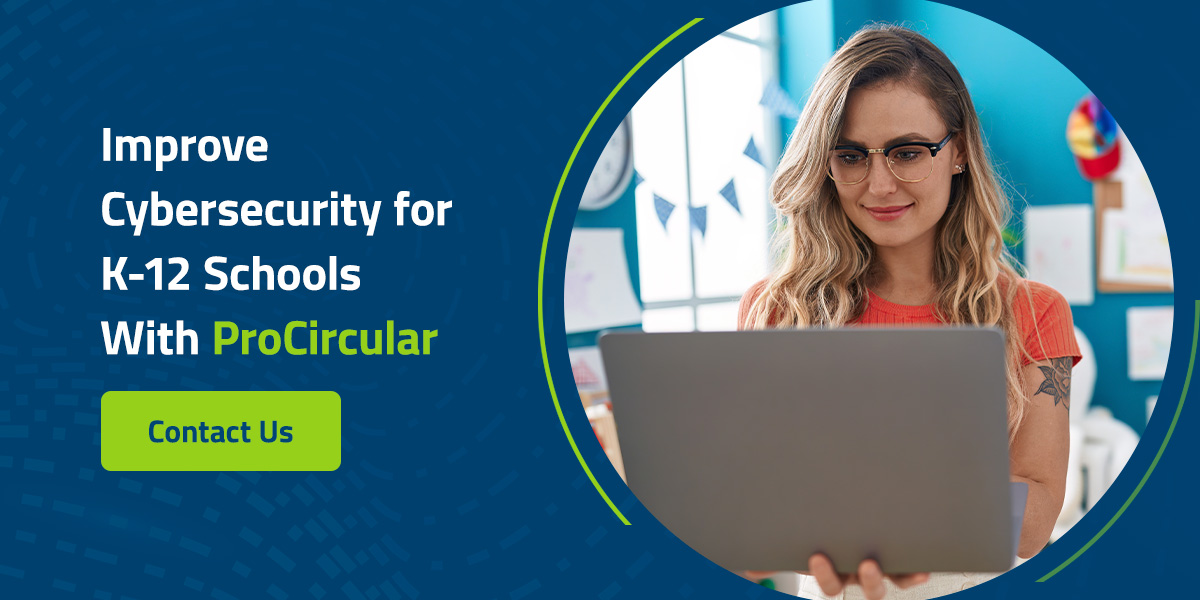
In the 2022-2023 academic year, at least eight K-12 school districts around the United States experienced significant cyberattacks. According to a U.S. Government Accountability Office report, these cyberattacks against schools could disrupt learning for three days to three weeks. Even worse, recovering from that learning loss could take up to nine months.
The prevalence of K-12 cybersecurity issues results from increased dependence on technology and computers to facilitate learning and maintain student, staff and other school records. Cybercriminals now consider schools a gold mine because they store data such as names, email addresses, academic records, health records, Social Security numbers and financial information. Therefore, they launch various attacks to access data for financial or hacktivist gains.
This guide explores the common cybersecurity threats to K-12 schools and recommendations to help you better secure your school's information. But before that, let's discuss why K-12 schools are susceptible to cyberattacks.
K-12 Schools' Vulnerability to Cyberattacks
K-12 schools are still learning how to adopt digital tools and platforms. The unfamiliarity makes schools increasingly vulnerable to cyberattacks and threats.
While students and teachers are tech-savvy, many lack training in cyber hygiene practices. Up to 26% of teachers admit not receiving any cybersecurity or data privacy training before leading digital classrooms. Therefore, it’s easier for cybercriminals to hack into systems because of the knowledge gaps and possible carelessness caused by ignorance.
Another vulnerability in K-12 schools is the lack of resources and finances to support cybersecurity. Many schools remain understaffed and underfunded, making it challenging to deploy and implement the latest and most effective security solutions.
Underfunding leaves many schools reliant on legacy systems whose manufacturers no longer maintain and update them. Schools cannot upgrade their hardware and software systems or install the latest security patches, making them susceptible to cyberattacks.
Finally, in recent years, cybersecurity compliance regulations for K-12 schools have continued evolving to keep up with technology threats. Many K-12 schools find it difficult and expensive to follow compliance guidelines because regular network and system audits are necessary to assess security protocols and identify potential risks.

What Are the Cyber Threats to K-12 Education?
K-12 schools face various threats that can disrupt operations and expose sensitive information about students, families, teachers and administrators.
Ransomware
K-12 schools are top targets for ransomware attacks because they’re data-rich environments susceptible to pressure. Up to 80% of schools in the U.S. and 13 other nations have fallen prey to ransomware attacks. Cybercriminals use ransomware to lock down school data and threaten to release it to the public until they receive a ransom. Ransomware is among the most damaging cyberattacks that disrupt school operations and cause financial losses of up to $1 million.
Cybercriminals exploit a school system’s weaknesses to launch ransomware attacks. K-12 school administrators can prevent these threats by regularly backing up data, ensuring they can quickly restore it if it becomes compromised.
The Cybersecurity and Infrastructure Security Agency and the Federal Bureau of Investigation advise against paying a hacker's ransom because it’s not an assurance that you'll regain access to all your data once you do. Additionally, paying hackers may encourage them to launch similar attacks on other schools.
Phishing Scams
According to research, 60% of educational organizations experienced phishing attacks in 2020. Phishing scams are when cybercriminals send malicious emails and messages to educators, staff, parents and students to gain access to a school's system. Phishing scams in schools primarily target teachers, with the scammers posing as parents or administrators to retrieve sensitive information, such as login credentials.
Educating teachers and faculty on phishing signs and conducting regular phishing simulations will help them prepare for these attacks. Teachers should know not to respond to phishing emails, download any attachments or share information. Instead, they should delete these immediately and forward the attempt to the IT department. It also helps to implement filters that reduce the number of phishing emails that get through.
Videoconferencing Breaches
Remote learning in K-12 schools relies on videoconferencing software such as Zoom and Google Meet. While reliable, these platforms are increasingly susceptible to various cyberattacks.
Videoconferencing breaches happen when cybercriminals gain unauthorized access and interrupt virtual classrooms. They may share disruptive content or malware that can infect an entire school system through the chat option on videoconferencing software.
The best way to prevent these attacks is by using strong, unique passwords, sometimes already provided by the platforms. It's also wise to use a single-use meeting ID instead of a personal meeting ID for various meetings. The waiting room feature on most videoconferencing platforms also provides more control over who can join.
Distributed Denial-of-Service Attacks
Hackers launch DDoS attacks by flooding and overwhelming school networks with useless traffic. These attacks prevent users like teachers, students and administrators from accessing the specific servers and networks. For example, when targeting learning management systems, they disrupt school operations by preventing students from attending classes and taking tests. Sometimes, hackers use them to mask other crimes against the school network.
You can avoid DDoS attacks by installing software and hardware-based firewalls to filter external traffic. Network redundancy also enables IT teams to provide multiple paths for redirecting traffic, which prevents school networks from getting overwhelmed. It also helps when the IT department anticipates these attacks and stays prepared to detect and redirect traffic spikes.

Improve Cybersecurity for K-12 Schools With ProCircular
ProCircular is a cybersecurity and compliance firm that can help your K-12 school stay safe from cyber threats and attacks. We can perform external and internal network penetration testing to find weaknesses in your system that cybercriminals would exploit. After the test, we document the risk and recommend ways to secure your school system and networks.
At ProCircular, we understand funding cybersecurity for schools may be challenging for many educational organizations. That's why we offer grant assistance to individual schools and school districts to combat cybersecurity threats to K-12 education. Contact us today for more information on how we can help you secure students' sensitive information.

